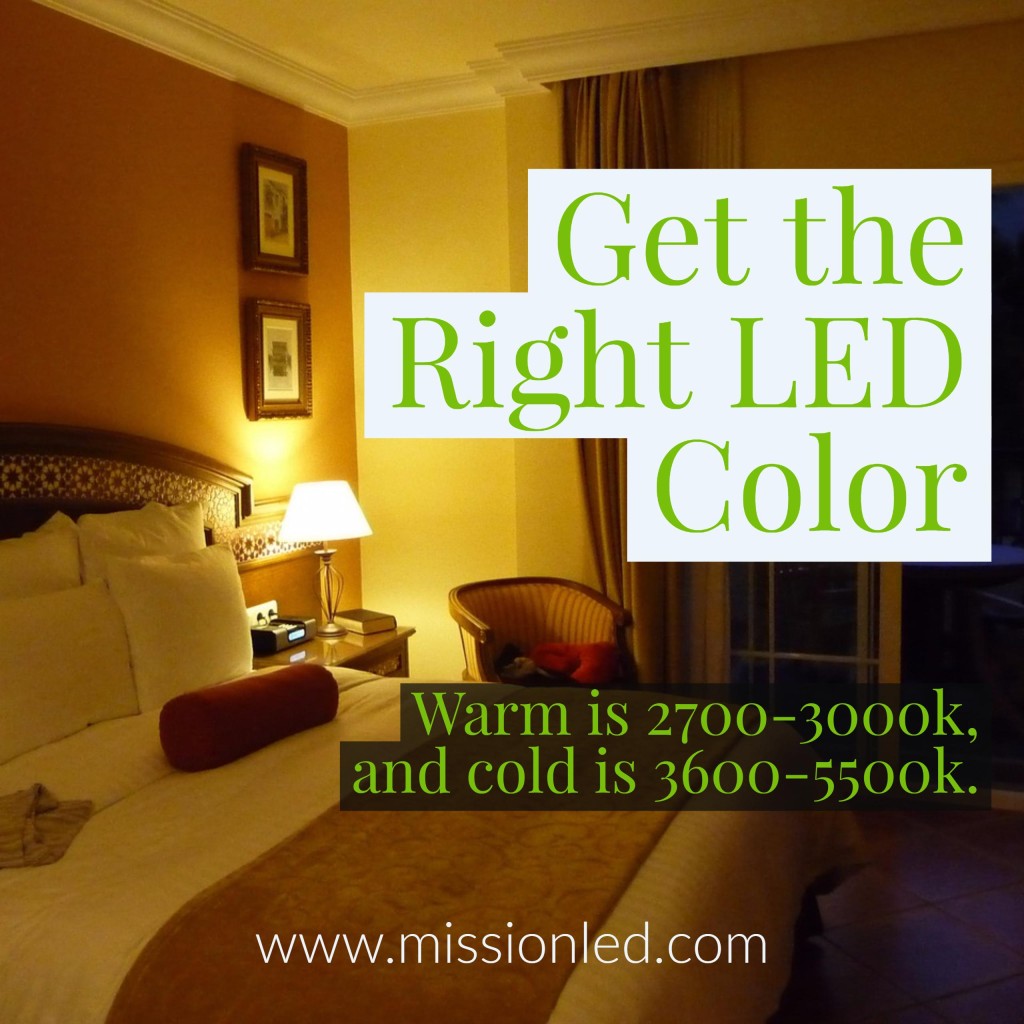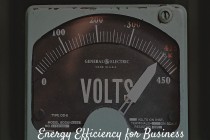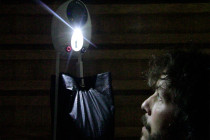You’ve done the research, checked the facts and the jury is in: LEDs are indeed the energy efficient bulb of the future. Making the decision to switch to LED was the easy part. Now it’s time to navigate the lighting aisle and learn LED lingo. Fortunately this helpful guide will provide all the info you need to make buying LEDs a breeze.
- Watts up with those lumens anyways? Traditional incandescent bulb brightness was indicated by watts. Most people have a general sense of the brightness that correlates to 30W, 60W and 100W incandescent bulbs. Technically, however, watts are not a direct measurement of brightness.
Instead, watts measure the amount of energy used to power the bulb itself. LED bulbs draw considerably less power than incandescent bulbs, so wattage will be a poor indicator of LED brightness. Rather than trying to memorize that an 8W LED is roughly equivalent to a 60W incandescent, check the number of lumens (lm) to get the true measurement of bulb brightness. The higher the lumens, the brighter the bulb. It might take a while for the brain to switch from auto-watt recognition to lumens, but until then, use this conversion chart when you are buying LEDs.
LED bulbs draw considerably less power than incandescent bulbs, so wattage will be a poor indicator of LED brightness.| Lumens | Incandescent | LED |
| 2,600 lm | 150 W | 25-28 W |
| 1,600 lm | 100 W | 16-20 W |
| 1,100 lm | 75 W | 9-13 W |
| 800 lm | 60 W | 8-12 W |
| 450 lm | 40 W | 6-9 W |
Chart courtesy of CNET
- Package makes perfect. Manufacturers want to make the transition to LED as easy as possible. For this reason, LED bulb packages are labeled with lots of important information. In addition to the brightness in lumens (see above), most LED bulb boxes will list energy consumed in watts, life expectancy in hours or years, color temperature in Kelvin (see below), and an estimated yearly cost or percentage of energy savings.
The packaging will also list important details like indoor/outdoor usage, fixture suitability and dimming functionality (more on this later). When in doubt, refer to package labels for the most accurate information related to each specific bulb.
- You can keep that warm glow. One of the chief complaints against compact fluorescent bulbs (CFLs) was their harsh, uninviting light. Fortunately, LEDs come in a wide range of color temperatures. From cool, daylight-like light, to the soft, warm glow most people associate with old school incandescent, LEDs have it covered.
Not too sure what Kelvin has to do with color? Just remember: low equals more golden glow and high looks like a crisp blue sky. In other words, LEDs with a lower Kelvin value are warmer in color whereas a higher Kelvin value is associated with a cool, bluish, more energizing light. Warm, golden light will typically measure 2,700 to 3,000K and cool, stark-white light is generally 5,000 to 6,500K.
Still not sure what it all means? Check out my blog How to choose the right LED color temperature.
- Pricier, but not prohibitive. We’ve come a long way since $40 LED bulbs. Manufacturing improvements have reduced LED prices considerably. It is not uncommon to find residential-use LED bulbs in the $5-$10 range at big box stores like Home Depot. Ikea even sells LED two-packs for $4-$13. Buying LEDs is still going to cost you more up front than incandescent bulbs, but the real deal is in the energy savings.
On average, LED bulbs consume one-sixth the energy of incandescent bulbs and last up to 25 times longer. To put this in perspective, replacing a 60-watt incandescent with an LED equivalent will save $130 in energy costs over the LED’s lifetime. If the average homeowner replaced all incandescent bulbs with LED, energy savings could top $250 annually.
- Dimming done right. The light-producing technology behind LEDs is vastly different from incandescent. For this reason, LEDs are not always compatible with traditional dimming switches. When it comes to dimming LED bulbs, you have three options:
– Replace your current dimming switch with one that is LED-compatible;
– Buy LEDs that are specifically compatible with traditional dimmers (these bulbs typically cost a bit more); or
– Purchase smart bulbs like Insteon LED or Philips Hue Lux LEDs, which make home light automation as easy as replacing a light bulb—no hardwiring required. Instead, these bulbs are connected to a home automation hub and are controlled by an app. In addition to dimming features, you can also schedule when lights turn on or off, and some models also change colors completely, which makes lighting automation a great alternative—and upgrade—to traditional dimming switches.
- Factor your fixture. While LEDs produce significantly less heat than their inefficient predecessor, they still produce some heat, which is released via a heat sink at the base of the bulb.
This design feature means many LEDs are not compatible with fully enclosed lighting fixtures. If you are buying LEDs for recessed or enclosed spaces, make sure they are specifically approved for fully or semi-enclosed fixtures. This will protect your LED investment and ensure your bulbs last as long as promised.
While LED technology and its applications are vast and complex, making the switch to LED lighting need not be intimidating. Just keep these tips handy the next time you’re buying LEDs.
About The Author

- Serial Entrepreneur, Technologist and Inventor my objective is to develop useful products that have a net positive effect in the lives of those that use them and the environment that we live in. CEO of Mission LED Lighting Company Ltd.
- 2017.12.27UncategorizedSaving the World and Saving Money: Green Home Improvements Every Homeowner Should Make
- 2017.01.17Be green & save5 Simple Green New Year Resolutions For 2017
- 2016.11.09LED factsReplacing a 400 HID Lamp for an LED
- 2016.09.26Be green & saveVintage LED Bulbs Make What’s Old New Again







trycone led
-Great Blog ! We are top class Led Light For Office in india, known for its open-minded products and a combination LED lighting range.
Reply